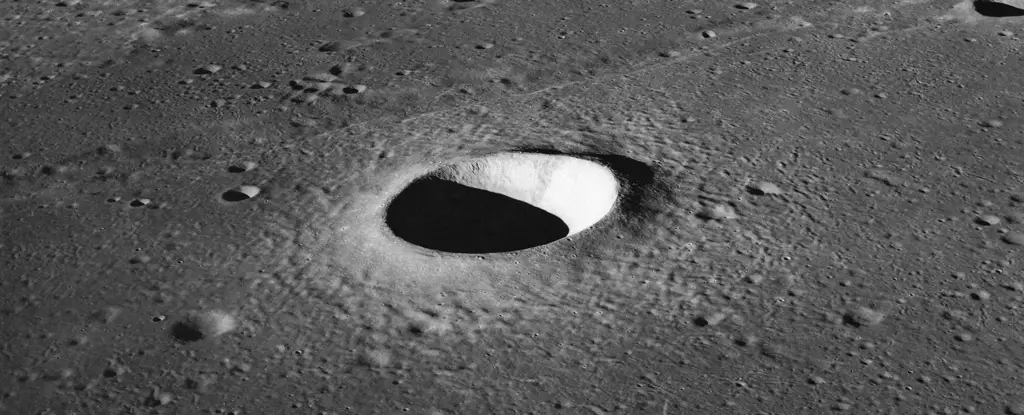The surface of the Moon is a remarkable time capsule, teeming with history preserved through the ages. Strikingly devoid of the dynamic geological processes seen on Earth, the Moon’s face remains marked by an array of impact craters. These scars originate from a cataclysmic era known as the Late Heavy Bombardment approximately 4 billion years ago, a period characterized by relentless asteroid and comet strikes. The lack of an atmosphere on the Moon means that, unlike Earth—the geologically active globe shaped by weathering and tectonics—these craters persist unaltered for millennia, offering astronomers and geologists an unparalleled view into the tumultuous history of our cosmic neighborhood.
Tracing the Cosmic Connection
The interaction between the Earth and the Moon is not merely a tale of two celestial bodies in orbit; it is a conduit for material exchange that has profound implications for our understanding of planetary formation and evolution. One fascinating aspect of this exchange involves the ejected lunar material that escapes the Moon’s gravitational grasp and finds its way to Earth. Researchers have dared to probe deeper into this phenomenon, eager to shed light on how often and in what quantities lunar debris lands on our planet, and how these impacts might influence both life and geological processes. This inquiry was recently invigorated by a team led by Jose Daniel Castro-Cisneros, who employed advanced computer simulations to provide new insights into Moon debris dynamics.
Breaking Ground with Innovative Simulation Techniques
The groundbreaking work by Castro-Cisneros and colleagues leveraged the sophisticated REBOUND simulation package, allowing them to explore a wider range of initial conditions and significantly extending the temporal framework of their analysis. Earlier studies employed separate phases to track lunar ejecta, but this team took a holistic approach, simultaneously modeling the Moon and Earth with enhanced accuracy in ejection velocity distributions. Data collection every five years for a century offers a comprehensive view, illuminating several startling patterns regarding the lunar material that travels to Earth.
The results from the study indicate that nearly 22.6% of the ejected lunar material finds its way to Earth over the course of 100,000 years. Additionally, the research uncovered that half of these collisions transpire within the initial 10,000 years following the impact event. By applying a power-law distribution to their findings, the researchers emphasized a foundational principle of how lunar ejecta interact with Earth’s gravitational field, showcasing that even slight variations at the start can lead to dramatically different outcomes.
Impact Patterns and Celestial Preferences
One of the most striking conclusions from this research involves the trajectory of lunar debris and its impact distribution on Earth. It was determined that material launched from the Moon’s trailing side carries the highest probability of reaching Earth, whereas the leading side presents a lesser chance of collision. Moreover, the identified pattern of impacts shows a pronounced concentration near the equator, with findings suggesting a staggering 24% fewer impacts at the poles. These insights reveal an elegant symmetry in the road that moon rocks travel, indicating that not only do location and timing matter, but they may also dictate the fate of potential life-affecting impacts.
Interestingly, the research emphasizes that the speed of these lunar ejecta upon striking Earth ranges from an astounding 11.0 to 13.1 km/s, a velocity capable of causing significant geological and biological ramifications. The data illustrates an almost rhythmic pattern to these strikes, occurring more frequently during early morning and evening hours, peaking at around 6 AM and PM. Such information is invaluable for understanding the history of impacts that have shaped evolutionary pathways on our planet.
The Lunar Earth Connection: A Deeper Insight
In the wake of these findings, the implications are profound, not only reinforcing the lunar origin hypothesis for certain near-Earth objects like Kamo’oalewa but also stressing the interconnected nature of the Earth-Moon system. This interaction has practical ramifications for our understanding of both celestial geology and tectonics, potentially redefining concepts regarding planetary exobiology and its dependence on external forces.
The revelations from this research are a clarion call for the scientific community to delve deeper into the complex interplay between our planet and its celestial companion. With each new study, the tapestry of cosmic connections grows richer, inviting us to explore the intricate, often invisible bonds that bind us to our Moon. Through this lens, we begin to appreciate not just the Moon as a distant satellite, but as a dynamic contributor to life on Earth, its history written in the dust of lunar impacts scattered across our blue planet.

